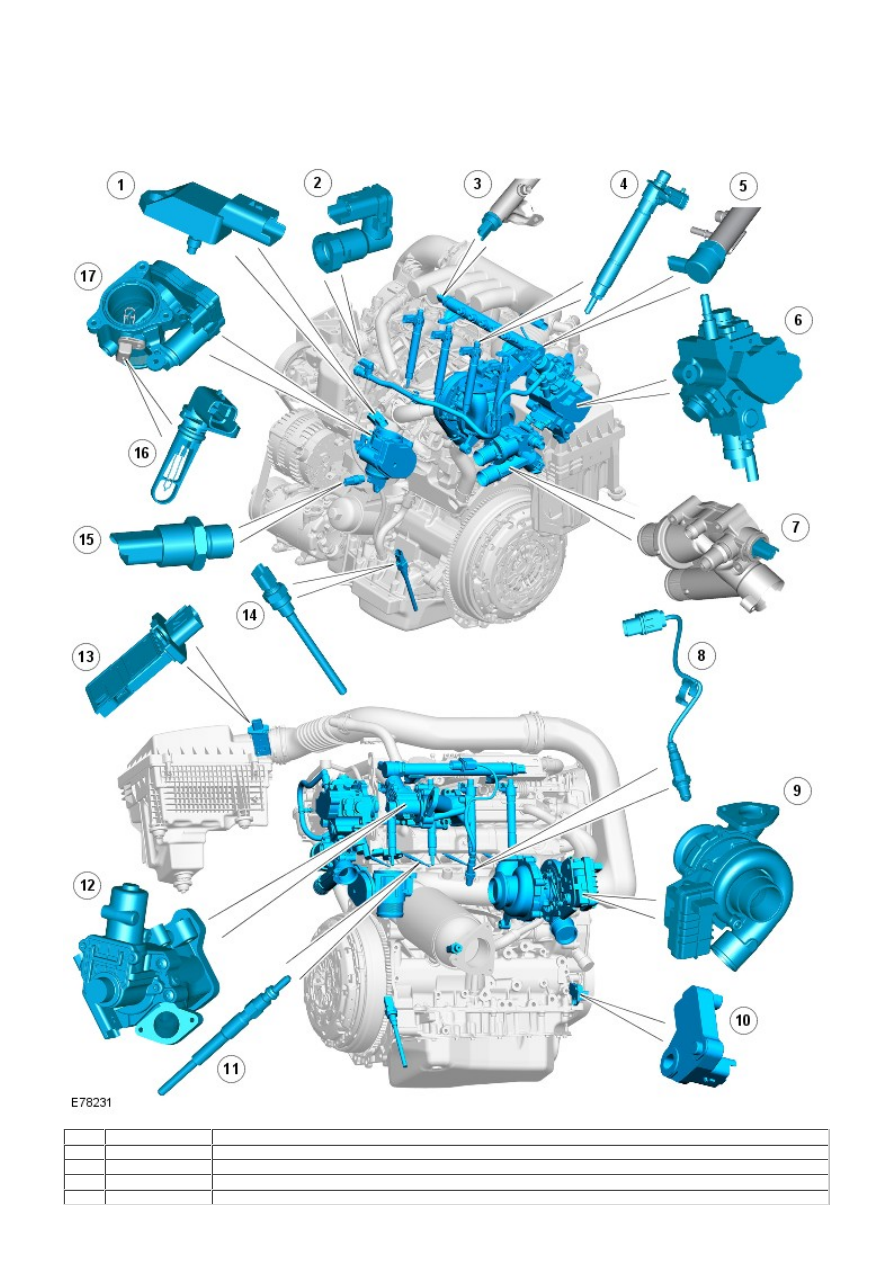Frelander 2. Manual - part 310

Electronic Engine Controls - TD4 2.2L Diesel - Electronic Engine Controls
Description and Operation
COMPONENT LOCATION SHEET 1 OF 2
Item
Part Number
Description
1
-
manifold absolute pressure (MAP) sensor
2
-
Fuel temperature sensor
3
-
Fuel rail pressure sensor
4
-
Injector (4 off)